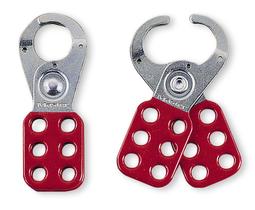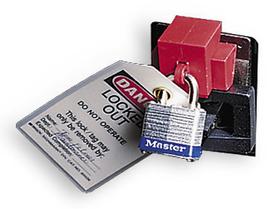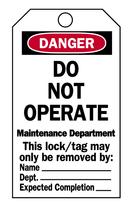 
|
General Shop Safety - Lockout
/ Tagout
|
Lockout/Tagout is the common name for a process of "Control of
Hazardous Energy" as established by the Occupational Safety and Health Administration (OSHA)
under Federal Registry 29 CFR 1910.147. The purpose of lockout/tagout is to prevent
injury to persons during the repair, maintenance, inspection, and
adjustment of equipment by controlling all energy sources used, stored, or
produced by the equipment.
To lock out a machine or piece of equipment, all energy sources are
turned off or disconnected, stored energy is released or restrained, and a lock is
applied either directly to the disconnects of each energy source or through a lockout device
affixed to each energy control device, so that re-energization cannot occur (Figure
1).
 |
 |
| Figure 1 Lockout equipment
ensures that equipment remains
inoperable while adjustments or repairs are made. |
| To tag out a machine or piece of equipment, all energy sources are
turned off or disconnected, stored energy is released or restrained, and a warning
tag, such as "Do Not Operate," is applied to the disconnects of each energy source, so
that re-energization cannot occur (Figure 2). |

Figure 2 Typical
lockout tag
|
Lockout/Tagout protects you from energy sources, such as moving
machinery, and stored energy, including electrical, chemical, thermal, hydraulic,
gravitational, and pneumatic.
Rules for acceptable lockout/tagout procedures:
- Each authorized employee is issued separate locks and tags.
- Locks and tags are standardized.
- Use locks and tags only for LOTO.
- Locks and tags have information about who placed them.
- Only the person who placed the lock may remove it.
- Authorized (qualified) employees are the only people allowed to lock
and tag out equipment or machinery.
- Know the equipment and energy sources.
- Notify all affected employees that the machinery, equipment, or process will be out of service.
- Conduct a normal shutdown. An orderly shutdown will be used to
avoid any additional or increased hazards to employees as a result of equipment
de-energization.
- Machine or equipment isolation: Place all controls in "off" position
and
shut all control valves.
- Place lockout/tagout device so that it will hold the energy
isolating devices from the "safe" or "off" position.
|


